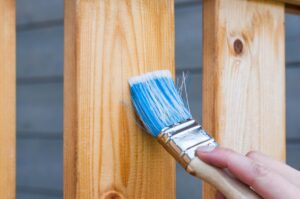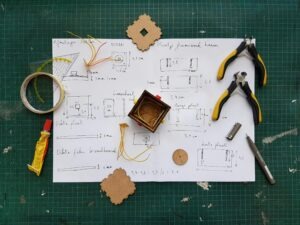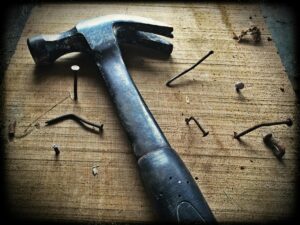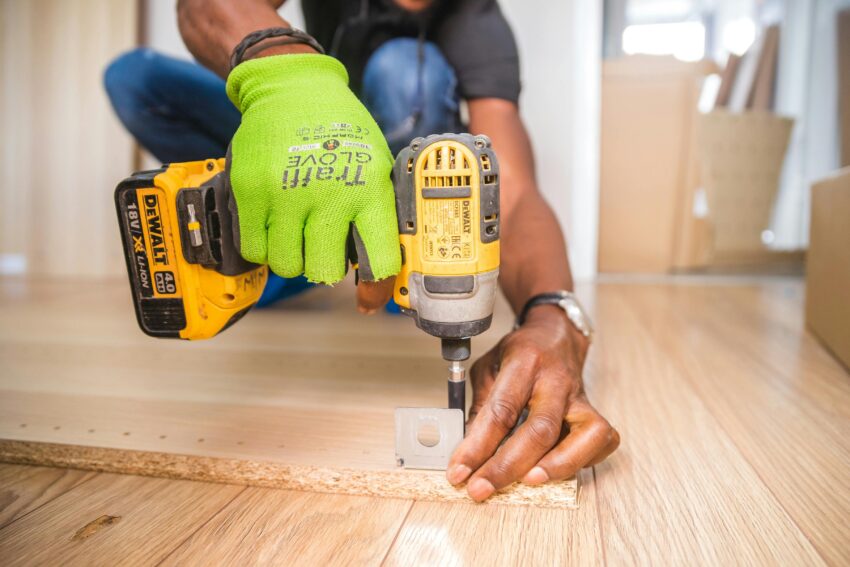Some home projects are perfect for DIY—like painting walls, installing shelves, or fixing a leaky faucet. But when it comes to electrical work, roofing, or structural repairs, it’s safer and smarter to hire a pro. Knowing where to draw the line can save you time, money, and headaches.
I’ve Been There: The Allure and the Risks of DIY
I’ve been in the home improvement world for over a decade, and I can’t count how many homeowners have come to me saying, “I thought I could handle it.” I get it—DIY feels empowering. You save money, gain skills, and feel accomplished. But let me tell you, not every job is meant for YouTube tutorials and borrowed tools.
So, what should you take on yourself, and where should you call in the cavalry? Let’s break this down with real examples and honest advice you won’t get from a hardware store flyer.
What You Should Do Yourself: Low-Risk, High-Reward DIY Projects

1. Painting Walls and Trim
This is the classic starter project—and for good reason. It’s affordable, straightforward, and forgiving.
Why it’s DIY-friendly:
-
Minimal tools required (brushes, rollers, painter’s tape).
-
Mistakes are easy to fix with a second coat.
-
You can work at your own pace.
Pro tip:
Always prep your surface. Clean walls, patch holes, and use a quality primer. I’ve seen “DIY” paint jobs peel in six months because people skipped this step.
2. Installing Shelves or Curtain Rods
With a drill, level, and a measuring tape, you’re good to go.
Why you can do it:
-
No wiring or plumbing involved.
-
It’s more about precision than skill.
Real story:
A client of mine proudly showed me their new floating shelves—perfectly aligned and stable. All they did was follow a $5 Home Depot guide. This is a win for DIY.
3. Replacing a Faucet or Showerhead
Plumbing sounds intimidating, but small fixture swaps are often plug-and-play.
Why it works for DIYers:
-
Modern faucets come with detailed instructions.
-
You don’t have to mess with pipes—just the fittings.
Caution:
Make sure to shut off the water supply first. I’ve had a neighbor flood their kitchen floor because they thought the knob was just for show.
4. Installing Peel-and-Stick Backsplash
Want to upgrade your kitchen aesthetic in an afternoon?
Why this one’s fun:
-
No tile cutting or grout involved.
-
Affordable and removable (great for renters).
From my experience:
These upgrades photograph incredibly well and make your space look custom on a budget.
5. Building Simple Furniture (IKEA and Beyond)
If you can follow instructions and use a hex key, you’re golden.
Why you should try it:
-
Flat-pack furniture is designed for consumers.
-
Mistakes rarely cost more than time and mild frustration.
Hot tip:
Lay out all your parts and hardware before you begin. And don’t overtighten screws—they strip fast.
What You Shouldn’t Do Yourself (And Why)
1. Electrical Work
This one’s a hard stop for me—and it should be for you too.
Why it’s dangerous:
-
One wrong connection can start a fire.
-
It’s often illegal to DIY without a license in many U.S. states.
-
You risk voiding your home insurance.
Example:
A homeowner tried to install a ceiling fan without knowing about load-bearing support. It fell—along with a chunk of drywall—and cost $800 to fix. Call an electrician. Always.
2. Structural Modifications
Thinking about knocking down a wall? Don’t do it until a pro evaluates it.
Why it’s risky:
-
Some walls are load-bearing—messing with them can compromise the entire structure.
-
Permits may be required.
From what I’ve seen:
A friend removed what they thought was a non-load-bearing wall. A week later, the ceiling cracked. Structural engineers don’t come cheap, and neither do lawsuits.
3. Roof Repairs
Even if it’s just a “small leak,” roofing is not the time to experiment.
Why pros are worth it:
-
Roofs are steep and slippery—fall risks are real.
-
DIY patches often fail under the next storm.
Real talk:
The number of people I’ve known who tried a “quick shingle fix” and ended up with water damage is higher than I’d like. Your roof protects everything below it—don’t cheap out here.
4. Major Plumbing
Clogs and faucets? Go ahead. Replacing pipes or dealing with sewage lines? That’s for licensed plumbers.
Why it’s a no-go:
-
Water damage is silent and expensive.
-
One leak can cause mold growth within 24–48 hours.
Example:
I helped a client who tried rerouting a pipe. They thought it worked until a slow leak warped their floorboards. $2,500 in repairs for a “DIY save” that cost them dearly.
5. HVAC Repairs
Your heating and cooling system isn’t just a box of parts—it’s a complex, finely tuned system.
Why pros should handle it:
-
Refrigerants are dangerous and regulated.
-
Incorrect repairs can void manufacturer warranties.
In my experience:
DIY HVAC jobs almost always end up as double-cost repairs when the technician has to fix your fix.
How to Decide: Should You DIY or Hire a Pro?

Ask yourself these five key questions:
-
Is it dangerous? If yes, don’t DIY.
-
Are permits required? If yes, hire someone.
-
Do I have the tools and skills? Be honest here.
-
What’s the cost of a mistake? If it’s high, call a pro.
-
Is there a legal liability (like electrical or plumbing codes)? Don’t risk it.
Personal checklist I use:
If the project involves anything behind walls, heavy machinery, or code violations—it’s hands off for me. I’ve learned that lesson the hard way, and so have many of my clients.
Why People Insist on DIYing Things They Shouldn’t
Let’s be real—it’s usually about money or pride.
But here’s what I always say:
“If you don’t pay for it now, you’ll pay for it later—often with interest.”
From experience, the biggest motivator behind hiring a professional is not just expertise, it’s peace of mind. That’s worth something, especially when your safety, home value, and time are on the line.
Common DIY Mistakes That Cost More in the Long Run

-
Using the wrong materials: I’ve seen people try to use interior paint outdoors. It peeled in two weeks.
-
Skipping prep work: Whether it’s sanding, cleaning, or measuring, skipping steps ruins results.
-
Not reading instructions: Sounds obvious, but trust me—this happens more than you’d believe.
-
Overconfidence: This one’s the killer. Just because it looks easy doesn’t mean it is.
Conclusion: It’s Not About Skill—It’s About Smart Decisions
Look, I’m all for getting your hands dirty. There’s real satisfaction in building or fixing something yourself. But part of being a smart homeowner (or renter) is knowing your limits.
DIY is great for cosmetic, small-scale projects. But when it comes to safety, complexity, or long-term investment, trust the pros. Your future self will thank you.
Got a project you’re unsure about? Drop your question in the comments—or reach out. I’ve seen it all, and I’m happy to help you figure out the best path forward
